Introduction
Female genital cutting (FGC) (preferred terminology) refers to partial or complete, non-therapeutic removal of the external female genitals for religious or cultural reasons. Other terms are female mutilation and female circumcision.
Four types of FGC are described by the World Health Organization: 1
Type 1: This is the partial or total removal of the clitoral glans (the external and visible part of the clitoris), and/or the prepuce/ clitoral hood (the fold of skin surrounding the clitoral glans).
Type 2: This is the partial or total removal of the clitoral glans and the labia minora (the inner folds of the vulva), with or without removal of the labia majora (the outer folds of skin of the vulva).
Type 3: Also known as infibulation, this is the narrowing of the vaginal opening through the creation of a covering seal. The seal is formed by cutting and repositioning the labia minora, or labia majora, sometimes through stitching, with or without removal of the clitoral prepuce/clitoral hood and glans.
Type 4: This includes all other harmful procedures to the female genitalia for non-medical purposes, e.g. pricking, piercing, incising, scraping and cauterizing the genital area.
Although FGC is practiced in approximately 31 countries, current immigration patterns have caused obstetricians and gynecologists throughout the world to encounter women who have undergone variations of the procedure. It is very important that women’s health providers understand the cultural as well as the health and social issues related to FGC so that they can manage the immediate and long-term complications of the procedure, while respecting the dignity of the woman.2
As explained by world expert on FGC, Dr Nawal Nour, most of the time, circumcision is done out of love. Parents initiate this procedure for their daughters, not to them. Being a wife and a mother is a woman’s livelihood in these societies; thus not circumcising one’s daughter is equivalent to condemning her to a life of isolation. Infibulation safeguards her virginity, preserves her chastity, and ensures her eligibility for marriage, thereby protecting her future.3 As Dr. Nour says: “Many women who have undergone FGC do not consider themselves to be mutilated, and do not feel that they are being selectively tortured because the majority of women in their community have gone through this ritual. Those who immigrate to the United States from refugee camps may be surprised to learn that most women here are not circumcised. Therefore, these women can be offended if they are referred to as having undergone genital mutilation. Instead, it is better to use the term circumcision, genital cutting, or the exact word they use in their language. Women who have undergone FGC have voiced concern that health care providers are not sensitive when broaching this subject and sometimes must be educated about this practice by the patient herself.”4
Epidemiology
The practice affects more than 200 million women and girls, mostly in Africa and the Middle East, the procedure taking place between the ages of 5 and 12. The prevalence of FGC in females ages 45-49 is 54 percent, whereas the prevalence in younger females (ages 15 to 19) is 35 percent, showing that the incidence of the practice has been slowly declining. 5
Procedure and outcomes
Commonly performed by non-medically trained people using no anesthesia or antibiotics, with sharpened stones or rusty knives, hemostasis may be accomplished with thorn or catgut suturing or application of concoctions made up of sugar, egg, or animal excrement.6 In some cases, the procedure may be done in clinical settings with clean instruments and anesthesia. The child’s legs are usually bound for about a week after the procedure.
Immediate possible complications include hemorrhage, problems with urination, infection, and sepsis.
Chronic problems after female genital cutting include dysmenorrhea, dyspareunia, chronic vaginal and bladder infections, voiding difficulties, fibrosis, keloids, sebaceous cysts, vulvar abscesses, infertility, and difficulty with pelvic examinations, coitus, and vaginal delivery.
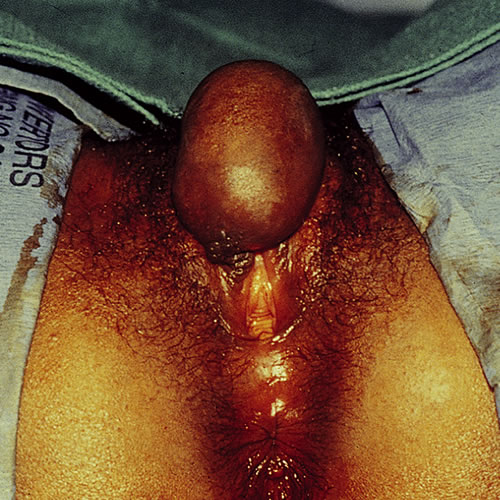
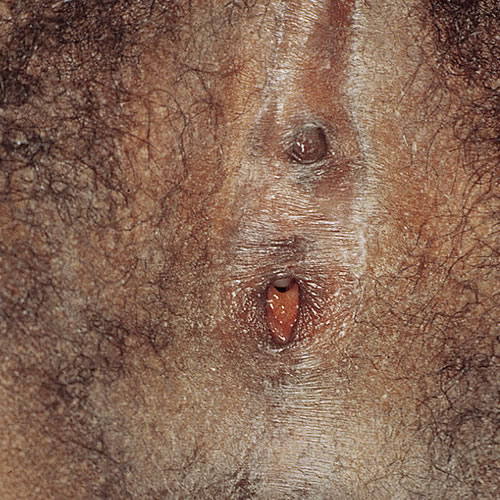
Defibulation prior to coitus to prevent dyspareunia is ideal, but may be declined by the patient because she wishes to be clearly seen as virginal after marriage. Defibulation prior to pregnancy or delivery is recommended to avoid problems during labor. It may be done in the second trimester of pregnancy under regional anesthesia to allow time for healing prior to labor.7 Defibulation is demonstrated in the photos below.
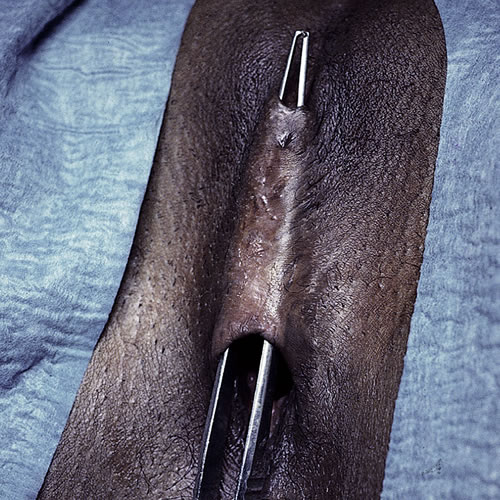
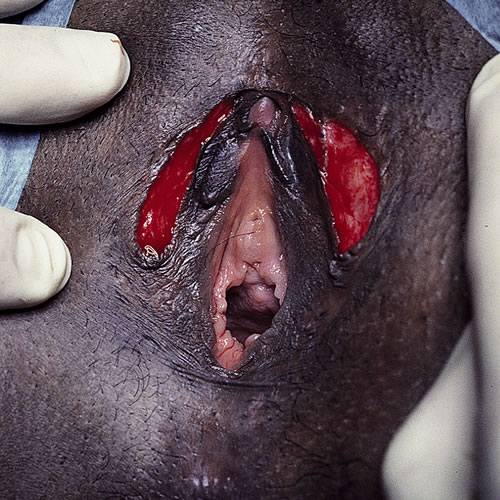
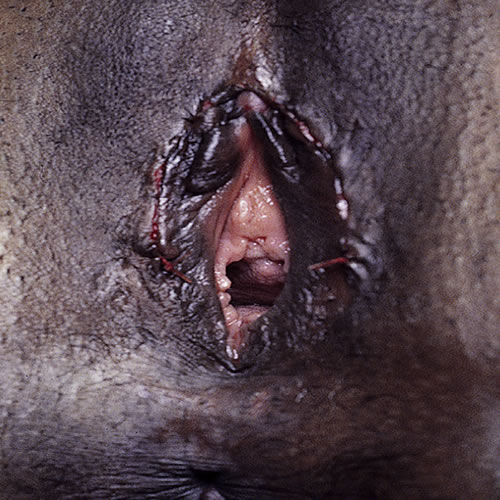
Some patients may want to be re-infibulated after a vaginal delivery. This is discouraged by medical professionals. Preparation of the patient well in advance of delivery should include sensitive counseling with respectful rationals for reasons to perform defibulation and not perform reinfibulation. While promoting concepts related to the healthiest outcomes, the practitioner may, in some cases, agree to reinfibulate.
References
- https://www.who.int/news-room/fact-sheets/detail/female-genital-mutilation Jan. 2022
- Nour, NM. Female Genital Cutting. UpToDate.com. Wolters Kluwer. Feb 23 2022.
- Nour N. Female circumcision and genital cutting. In UpToDate, Rose B, ed. Wellesley, Mass, 2009.
- Nour, NM. Female Genital Cutting. UpToDate.com. Wolters Kluwer. Feb 23 2022.
- https://data.unicef.org/resources/female-genital-mutilationcutting-global-concern/. Feb 2016.
- Nour, NM. Female Genital Cutting. UpToDate.com. Wolters Kluwer. Feb 23 2022.
- American College of Obstetricians and Gynecologists. Female circumcision/Female Genital Mutilation: Clinical management of circumcised women. American College of Obstetricians and Gynecologists, Washington, DC 1999